To render animal fats for soap in your crockpot, you'll have five reliable methods to choose from: the traditional wet rendering with salt water, pure dry rendering on low heat, the grind-and-render technique for faster results, the double-strain method for extra purity, and the slow cold-process method for minimal odor. Each technique requires proper fat preparation and straining, but you'll get clean, pure tallow perfect for soapmaking. The secrets to success lie in the details of each approach.
Selecting and Preparing Raw Animal Fats for Rendering
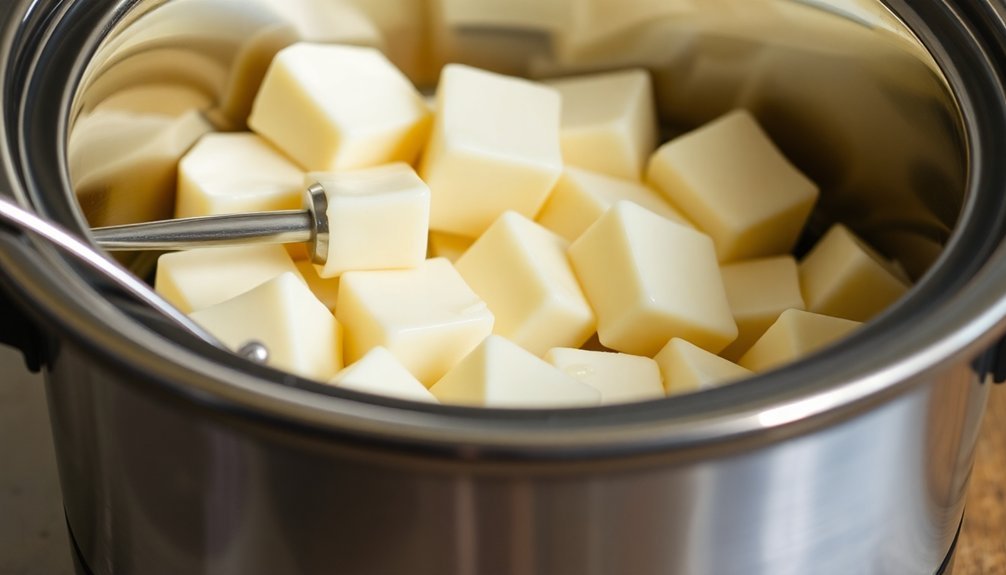
Although making soap from animal fats requires careful preparation, you'll get the best results by starting with high-quality raw materials. For the best tallow, select suet from grass-fed beef or pasture-raised animals, which guarantees purer fat and minimizes toxins commonly found in conventional livestock.
Before you begin the rendering process, trim away any meat, gristle, or blood from your fat source. To make handling easier, freeze the fat first, then cut it into smaller pieces about 1/2 inch in size.
You'll want to grind or mince these pieces as finely as possible to promote even melting and reduce unwanted meaty odors during rendering. Until you're ready to start, store your prepared fat in an airtight container in the refrigerator or freezer to keep it fresh.
The Wet Rendering Method: Salt and Water Process
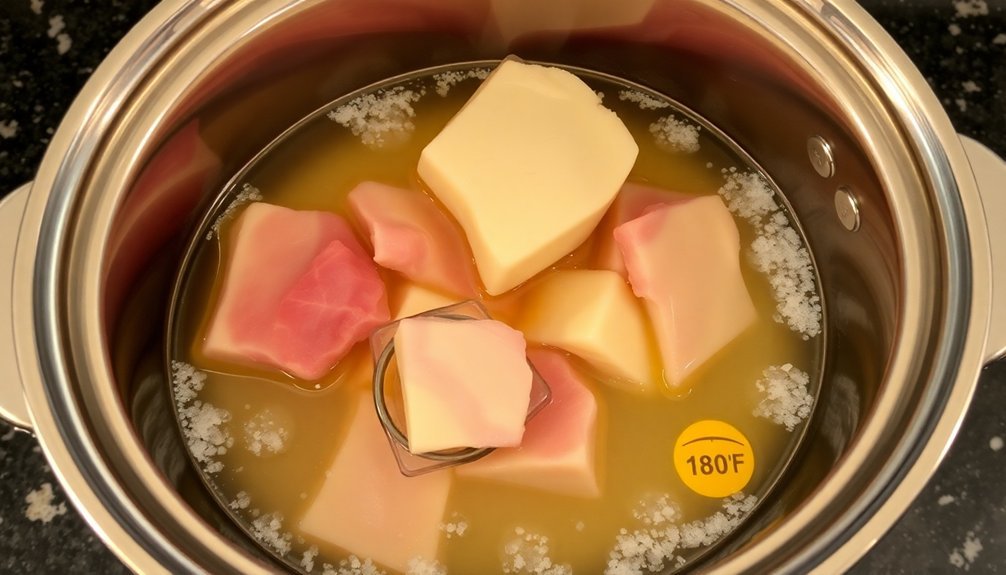
After preparing your raw animal fats, the wet rendering method offers a foolproof way to create pure, odorless tallow in your crockpot.
You'll need to combine 6 cups of water and 3 tablespoons of salt with your prepared suet in the slow cooker, which helps prevent burning while rendering fat.
Set your slow cooker to low heat and let it work for 6-8 hours, giving it an occasional stir. The water and salt mixture helps purify the fat and guarantees a smooth final product.
Once cooking is complete, you'll need to strain the rendered tallow through a fine mesh strainer lined with cheesecloth. For best results, repeat this straining process 2-3 times to remove all impurities.
The end result is a clean, odorless tallow that's perfect for making handmade soaps.
The Dry Heat Method: Pure Fat Extraction
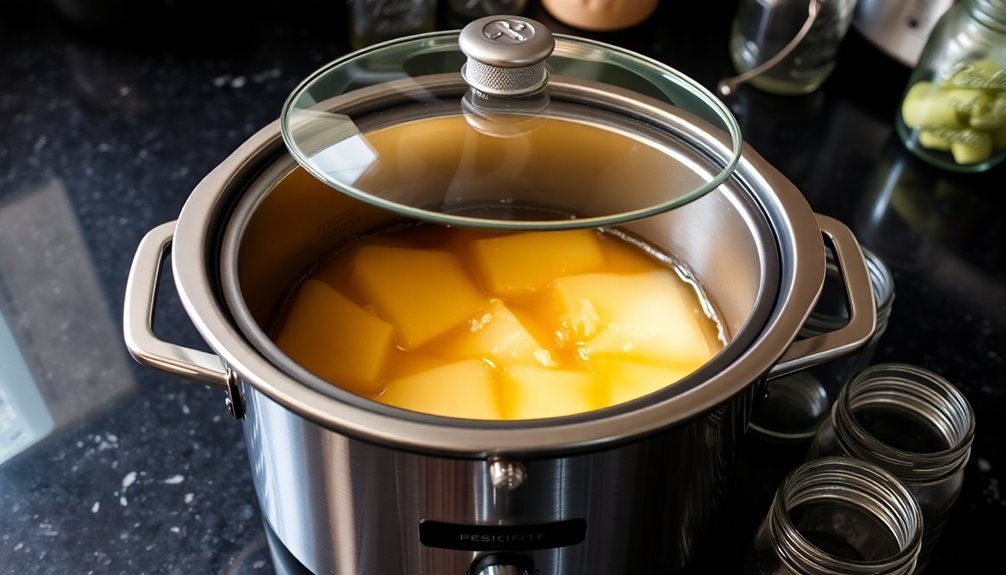
Unlike the wet method, the dry heat approach relies on rendering pure animal fat without any added liquids. To use this dry rendering method, you'll need to cut the fat into small pieces, aiming for uniform 1/2 inch cubes.
Place these directly into your large stockpot or slow cooker. Set your cooker to low setting and let it work for about 20 hours. You'll want to stir occasionally to guarantee even heating and prevent any burning.
As you render tallow, remove solid bits of meat and impurities that float to the surface. Once the process is complete, strain the rendered fat through a mesh strainer lined with cheesecloth to remove the tallow.
This produces a pure, clean fat that's perfect for making soap and skincare products.
Purifying and Straining Rendered Fats
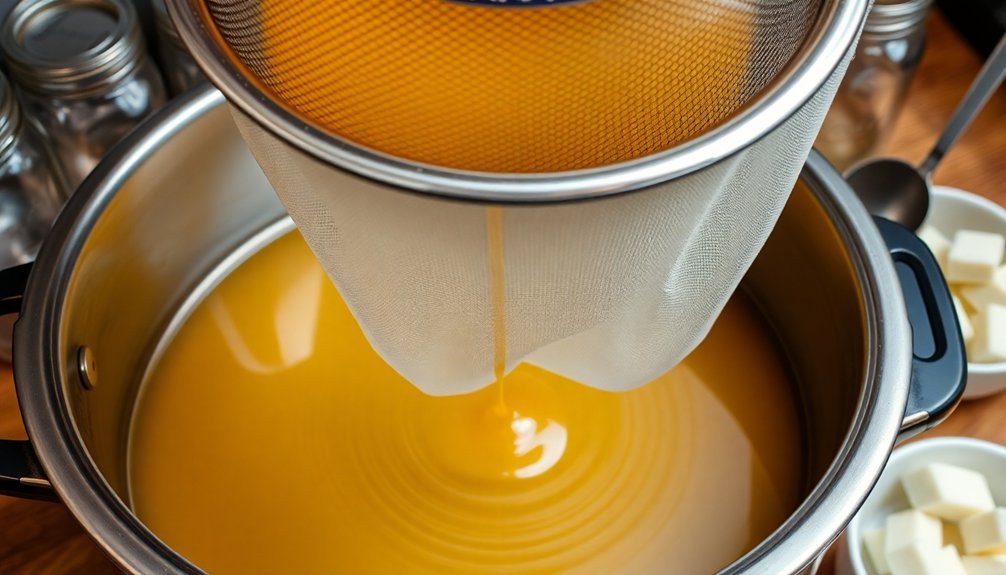
Ensuring your rendered fats are properly purified makes the difference between high-quality and subpar soap. You'll need to strain your liquid tallow through a fine mesh strainer lined with cheesecloth to remove impurities. For best results, repeat this process multiple times until the fat appears clear and light in color.
| Storage Method | Temperature | Duration |
|---|---|---|
| Refrigerator | 35-40°F | 1 year |
| Freezer | 0°F | Indefinite |
| Room Temp | 68-72°F | 1 month |
| Cool Storage | 50-60°F | 6 months |
Let your purified fat cool and solidify in a clean container, allowing any remaining sediment to settle at the bottom. Once strained and cooled, store your rendered fat in an airtight container. You'll find that properly purified tallow maintains its quality longer and produces superior soap.
Storing and Preserving Rendered Soap Fats
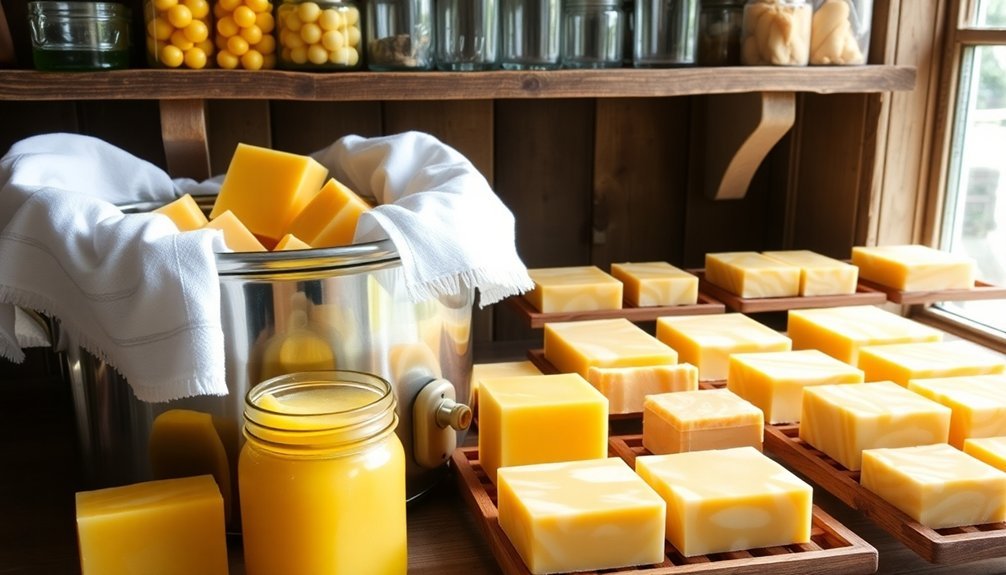
Proper storage of rendered soap fats stands as one of the most critical steps in maintaining their quality for future use.
You'll want to store tallow and other rendered fats in airtight containers, with glass being your best choice for long-term usability. Before storing, verify you're cooling completely to prevent condensation and potential spoilage.
For preserving rendered fats effectively, follow these essential steps:
- Check for minimal odor – discard any fats that smell rancid
- Label storage containers with rendering dates to track freshness
- Choose either refrigeration (up to 12 months) or freezing (indefinitely)
Frequently Asked Questions
How to Render Deer Fat in Crockpot?
Trim deer fat into 1/2-inch cubes, place in crockpot with 1 cup water, and cook on low for 6-8 hours. Stir occasionally, then strain through cheesecloth. Store your rendered tallow in airtight containers.
Can You Melt Soap in a Slow Cooker?
Yes, you can melt soap in a slow cooker. Set it to low heat, cut your soap into small pieces, and stir occasionally. You'll want to add a little water or oil for smoother consistency.
Is It Better to Render Tallow Wet or Dry?
You'll get better results with wet rendering for tallow. It'll take longer but gives you a cleaner, odorless product that's perfect for skincare and soap. The water-salt mixture helps prevent burning and purifies better.
How Do You Render Animal Fat for Cooking?
Cut your animal fat into 1/2 inch cubes, place them in a slow cooker on low heat for 6-8 hours. Stir occasionally, strain through cheesecloth when clear, and store in an airtight container when cooled.
In Summary
You've now learned five reliable crockpot methods for rendering animal fats into soap-making materials. Whether you've chosen the wet rendering or dry heat method, you'll find that proper preparation and patience are key to success. Remember to strain your rendered fats thoroughly and store them correctly to maintain quality. With these techniques, you're ready to create your own homemade soaps from rendered animal fats.

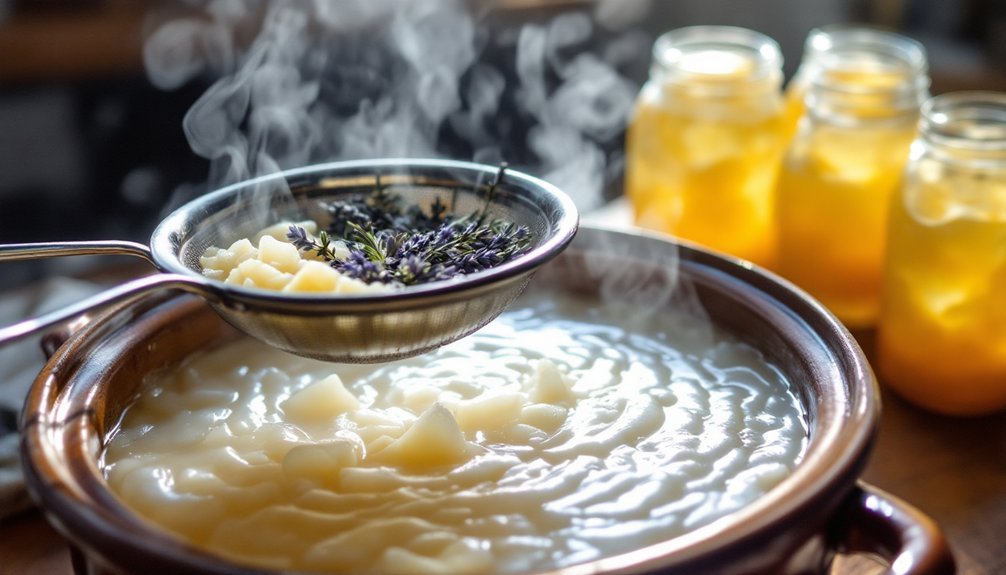



Leave a Reply